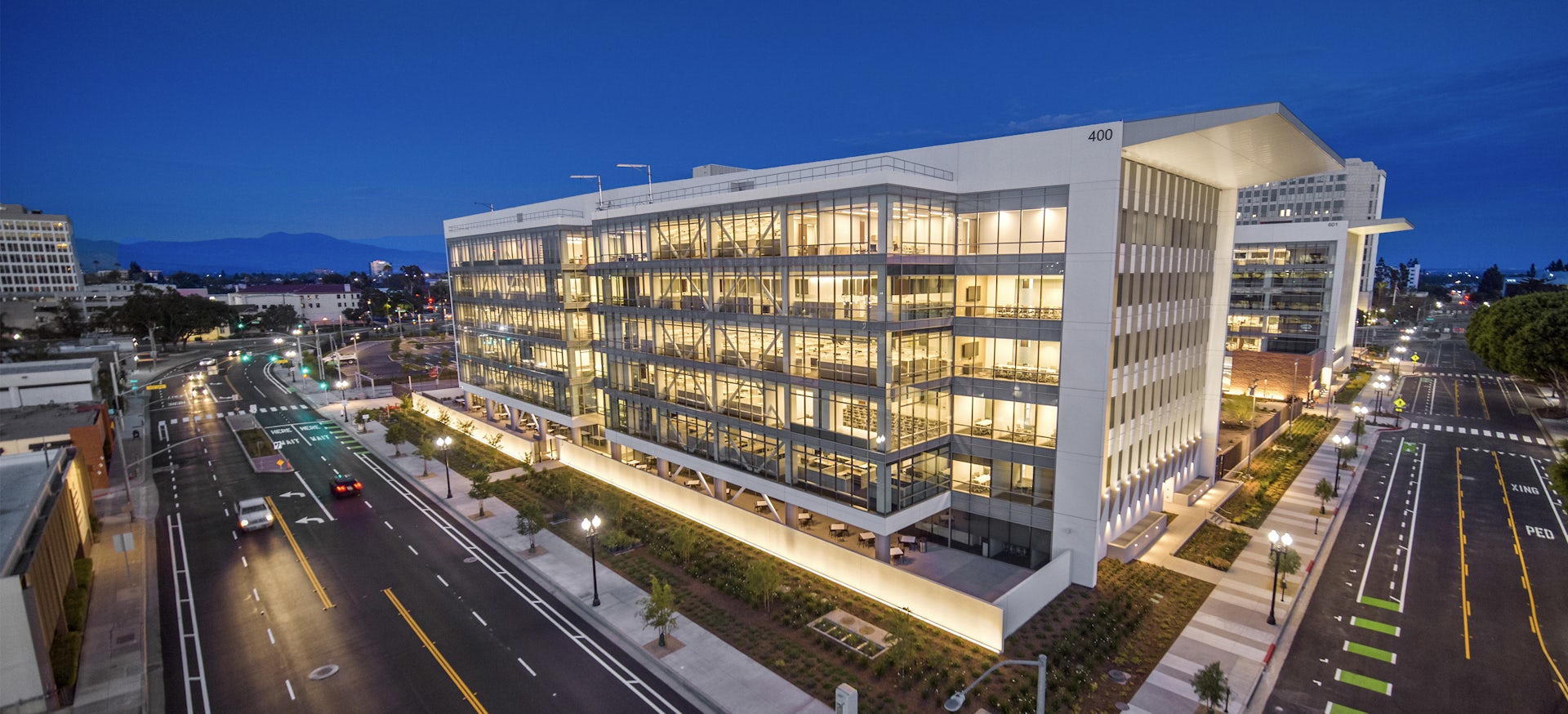By Joe Gose
The following is excerpted from Urban Land magazine.
Thanks to one of the largest public/private partnerships (P3s) ever assembled in California, Orange County now boasts cutting-edge, energy-efficient government buildings. The $400 million project, known as the Civic Center, is the cornerstone of a 20-year plan to modernize the county’s real estate assets in downtown Santa Ana, create healthier work environments for employees, and reshape the county’s connections with the public.
Orange County last July opened the second phase of the development—the six-story, 250,000-square-foot (23,000 sq m) County Administration North building. A 35,000-square-foot (3,300 sq m) public plaza connects the building to its virtual twin—County Administration South—which opened in 2019. Orange County is pursuing Leadership in Energy and Environmental Design (LEED) Silver certification, at the minimum, for the new administration buildings.
The P3 was composed of the county, developer Griffin Structures, design firm LPA Design Studios, and general contractor Swinerton Builders. In all, the strategic plan is repositioning every aspect of Orange County’s facilities, which house 4,600 employees in more than 1.6 million square feet (149,000 sq m) of space in Santa Ana’s downtown.
“The county had aging building infrastructure: it literally had not constructed a new building in 50 years,” says Dan Heinfeld, president of LPA, which has four offices in California and two in Texas. “From the very beginning, we talked about how this was an opportunity for the county to take a different approach and be a much more transparent and open government. That really guided the whole process.”















